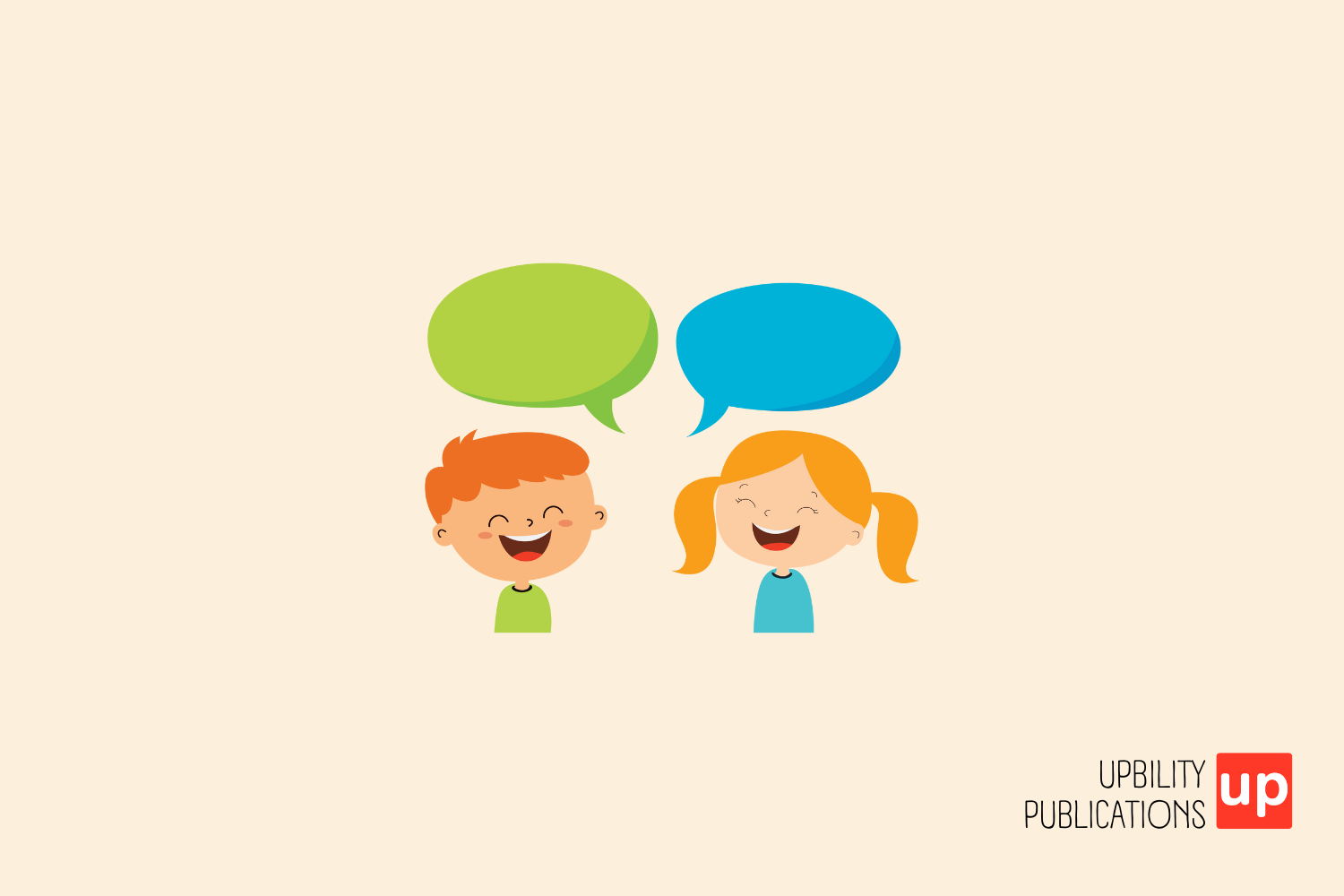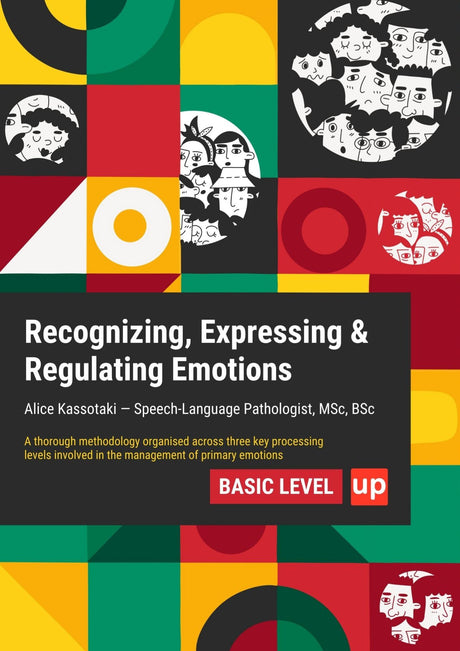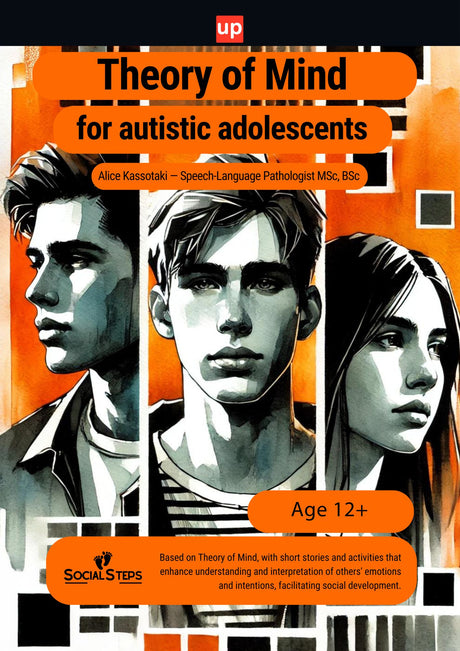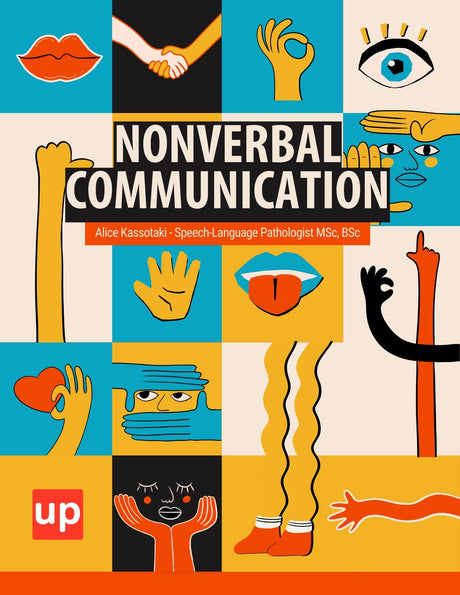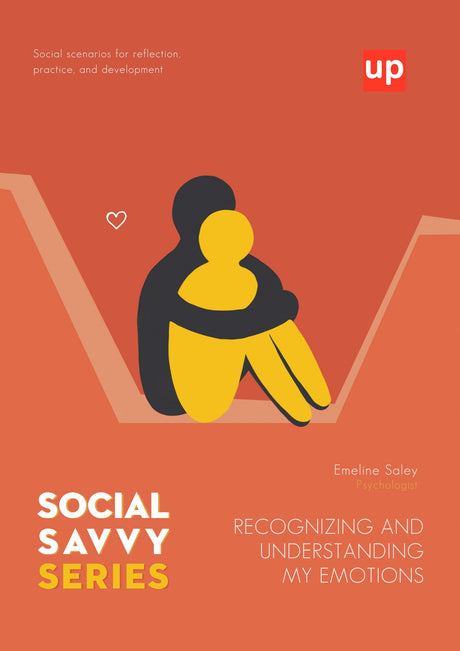For parents and Speech-Language Pathologists (SLPs), witnessing a child struggle to express their thoughts, needs, and feelings can be a significant concern. An expressive language delay means a child has difficulty using words, gestures, and grammar to communicate, often stemming from challenges in early language development—a foundational stage for later communication skills.
Early intervention is crucial in addressing expressive language delays, as timely assessment and goal-setting can significantly improve outcomes for young children.
This guide provides a comprehensive roadmap to the most effective speech therapy goals designed to unlock a child’s voice. We will explore how goals are developed, from initial assessment to specific, actionable targets, empowering both families and professionals to foster meaningful communication skills through the transformative power of well-designed speech therapy goals. Recent data underscores the urgency, as speech delay diagnoses have increased significantly, making targeted intervention more critical than ever.
Key Points
- Personalized and Functional Goals Are Essential: Effective goals for speech therapy for expressive language delay must be tailored to the child’s unique communication challenges and focus on functional communication skills that improve daily interactions.
- Collaboration Between Therapists and Families Accelerates Progress: Consistent reinforcement of therapy goals at home, combined with professional intervention, creates a powerful environment for the child to practice and generalize expressive language skills.
- Measurable and Specific Goals Drive Success: Creating goals using frameworks like SMART and the DO + CONDITION + CRITERION approach ensures that goals are clear, trackable, developmentally appropriate, and achievable, allowing therapists and families to monitor progress and adjust interventions as needed.
Understanding Expressive Language Development & Identifying Delays

Expressive language is the ability to use vocabulary, sentence structure, and gestures to convey messages. It’s how we “output” language. Evaluating a child's ability to express themselves involves assessing how well they can use words, sentences, and gestures to communicate their needs and ideas. A delay occurs when a child’s ability to express themselves lags behind typical developmental timelines, and it is important to consider the child's current abilities when identifying such delays. This can impact social interactions, academic learning, emotional regulation, and overall speech and language skills. Effective speech therapy targets these specific deficits to close the gap and build confident communication.
Key Developmental Milestones for Expressive Language
Tracking milestones provides a general guide for language development. While every child is unique, common benchmarks include:
- By 12 months: Using gestures like waving, babbling with different sounds.
- By 18 months: Using at least 10-20 single words.
- By 2 years: Using 50+ words and starting to combine two words (e.g., "more juice").
- By 3 years: Using 3-4 word sentences and being understood by familiar adults.
Recognizing the "Red Flags": When to Seek an Evaluation
Parents and caregivers should consider an evaluation with a Speech-Language Pathologist if a child:
- Isn't meeting the key milestones listed above.
- Has a very limited vocabulary for their age.
- Relies primarily on gestures to communicate past 18 months.
- Has difficulty putting words together to form sentences.
- Is frequently frustrated by their inability to communicate their wants and needs.
The Interplay with Receptive Language Skills (Briefly addressing connection, maintaining expressive focus)
While our focus is expressive language (output), it’s linked to receptive language (understanding), with language comprehension being a key component of receptive language skills. A child must first understand words before they can use them meaningfully. An assessment will evaluate both, but expressive language goals specifically target the production of sounds, words, and sentences to convey a message.
The Foundation of Effective Goals: Comprehensive Assessment & Diagnostic Process
Targeted therapy goals don’t come from a template; they are born from a thorough assessment. As part of the diagnostic process, assessment includes evaluating speech production to identify specific communication challenges. This foundational step ensures that intervention is personalized, efficient, and addresses the child’s specific areas of need.
The Critical Role of the Speech-Language Pathologist (SLP)
The SLP is a trained expert in communication disorders. They administer and interpret assessments, diagnose delays, and develop a customized treatment plan. Their expertise is vital in distinguishing between a simple delay and a more complex disorder, guiding parents through the process and setting the stage for successful speech therapy.
Assessment Methods for Expressive Language: Identifying Specific Deficits
An SLP uses a combination of methods to build a complete picture of a child's communication skills:
- Standardized Tests: Comparing a child's performance to peers of the same age.
- Informal Observation: Watching the child play and interact in a natural setting.
- Parent/Caregiver Interviews: Gathering crucial information about the child's communication at home.
- Language Sampling: Analyzing a sample of the child's spontaneous speech for vocabulary, sentence structure, and grammar.
From Assessment Findings to Actionable Goals: A Logical Link
The data gathered during the assessment directly informs the creation of therapy goals. If an assessment reveals a child uses only single words, an initial goal will be to combine two words. If grammar is the primary issue, goals will target specific morphemes like plural “-s” or past tense “-ed.” This logical link makes therapy focused and effective.
SLPs may use an IEP goal bank or a speech therapy goal bank as a resource to select and tailor goals based on assessment findings, ensuring that objectives are individualized and aligned with each client's needs.
Understanding the Diagnostic Process for Expressive Language Delays
After the assessment, the SLP synthesizes all information to determine if a child's skills fall outside the typical range of development. A diagnosis of Expressive Language Delay or Disorder is made based on these findings, which then allows the SLP to create a precise, evidence-based treatment plan with clear speech therapy goals.
The Power of Nonverbal Communication: The Role of Body Language

Nonverbal communication is a powerful tool that goes hand-in-hand with spoken language, especially for children working to enhance their expressive language skills. Body language—including facial expressions, eye contact, gestures, and posture—can often communicate as much as, or even more than, words themselves. For children with expressive language difficulties, learning to use and interpret nonverbal cues is a critical part of developing effective communication skills.
In speech therapy, speech language pathologists recognize that expressive language is not limited to words and sentences. Nonverbal communication provides essential context, helps clarify meaning, and supports a child’s ability to connect with others. For example, a simple gesture like pointing or nodding can help a child express needs or participate in social interactions, even when spoken language is limited. Eye contact and facial expressions also play a key role in demonstrating joint attention and conveying emotions, which are foundational for social communication skills.
Therapy goals often include structured activities that teach children to both use and understand body language. SLPs may use visual prompts, picture cues, and role-playing to help children practice making eye contact, using appropriate gestures, and interpreting nonverbal signals from others. These strategies not only support expressive language development but also foster functional communication in real-life situations.
By integrating nonverbal communication into expressive language goals, children gain a more complete set of language skills. This holistic approach empowers them to communicate effectively, navigate social interactions, and overcome unique communication challenges—unlocking their full potential both in and out of the classroom.
Crafting Powerful Goals: The SMART & DO+CONDITION+CRITERION Framework
Effective therapy relies on well-written goals. They provide a clear destination for therapy sessions and a benchmark for measuring progress. Incorporating structured activities helps systematically target specific language skills, ensuring that each session is organized and purposeful. Vague objectives lead to unfocused therapy, while sharp, measurable goals—such as those that aim to expand sentence length—drive tangible results.
Why Goal Setting Matters: Focus on Functional Communication Outcomes
Goals are the bedrock of speech therapy. They ensure that every activity has a purpose: to improve a child's ability to communicate in real-world situations. Functional goals target skills that enhance social interactions, increase independence, and reduce frustration, directly improving quality of life.
The SMART Goal Framework: Specific, Measurable, Achievable, Relevant, Time-Bound
SLPs often use the SMART framework to write effective goals:
- Specific: Clearly states what the child will do. For example, "The child will use complete sentences to describe a picture."
- Measurable: Defines how progress will be tracked (e.g., in 8 out of 10 opportunities).
- Achievable: Is realistic for the child’s current abilities.
- Relevant: Directly relates to the child’s functional communication needs.
- Time-Bound: Sets a timeframe for achieving the goal (e.g., within 12 weeks).
The DO + CONDITION + CRITERION Approach for Expressive Language Goals
This is another practical formula for goal writing:
- DO Statement: The action the child will perform (e.g., “will say,” “will combine,” “will use correct subject-verb agreement in simple sentences”).
- CONDITION: The context or circumstances (e.g., “during a play activity,” “when asked a question”).
- CRITERION: The level of performance required (e.g., “with 80% accuracy,” “in 4 out of 5 trials,” “will produce grammatical sentences in response to picture descriptions”).
Core Expressive Language Goal Categories & Examples: A Deep Dive

Expressive language goals can be organized into key categories that build upon one another, from foundational skills to complex conversation. These goal categories are specifically designed to enhance expressive language skills in children by targeting developmental milestones and supporting effective communication. Many SLPs utilize a “Goal Bank” as a starting point to efficiently craft these individualized objectives.
Early Communication Foundations: Gestures, Sounds, and First Words
For early communicators, goals focus on pre-verbal skills that pave the way for speech.
- Example Goal: The child will imitate 5 functional gestures (e.g., wave, clap, point) with minimal prompting in 4/5 opportunities.
- Example Goal: The child will demonstrate joint attention by making eye contact or following another's gaze to an object during play in 4/5 opportunities.
Expanding Vocabulary (Semantics): Building a Rich Lexicon
A robust vocabulary is essential for expressing ideas. Goals target both the number and variety of words.
- Example Goal: The child will label 50 common nouns from pictures or objects with 90% accuracy.
- Example Goal: The child will use descriptive words to elaborate on vocabulary, such as providing details about objects, people, or events.
- Example Goal: The child will use words related to comparing and contrasting, such as "same," "different," "bigger," or "smaller," to describe similarities and differences between objects.
Mastering Sentence Structure & Grammar (Syntax & Morphology)
This involves moving from single words to grammatically correct sentences.
- Example Goal (Simple Sentences): The child will produce simple sentences with correct word order and subject-verb agreement (e.g., “The dog runs”) in response to picture prompts in 8 out of 10 opportunities.
- Example Goal (Compound Sentences): The child will form compound sentences using conjunctions such as and, but, or (e.g., “I like apples and I like bananas”) during structured activities in 8 out of 10 opportunities.
- Example Goal (Present Tense Verbs): The child will accurately use present tense verbs in sentences (e.g., “She eats lunch”) during conversation tasks in 8 out of 10 opportunities.
- Example Goal (Irregular Past Tense Verbs): The child will use irregular past tense verbs correctly in sentences (e.g., “He ate the cookie”) during storytelling activities in 8 out of 10 opportunities.
- Example Goal (Future Tense Verbs): The child will use future tense verbs appropriately in sentences (e.g., “I will go to the park”) during structured language tasks in 8 out of 10 opportunities.
- Example Goal (Spatial Concepts): The child will follow directions containing spatial concepts (e.g., “Put the ball under the table”) to demonstrate understanding of location and position in 8 out of 10 opportunities.
- Example Goal: The child will combine a noun and a verb to create a two-word phrase (e.g., “baby sleep”) during structured play in 8 out of 10 opportunities.
Answering Questions & Engaging in Conversational Turns
This area focuses on using language for social interactions.
- Example Goal: The child will answer “what” and “where” questions related to a shared storybook with 80% accuracy across three consecutive sessions.
- Example Goal: The child will participate in conversational speech by engaging in back-and-forth exchanges with a peer, demonstrating appropriate turn-taking and responding to questions during natural interactions.
Developing Narrative & Discourse Skills: From Sentences to Stories
For older children, goals target the ability to retell events or create stories, which is crucial for social and academic success. Developing strong narrative skills, such as telling a story with a clear beginning, middle, and end, helps improve language conceptualization and engagement in relatable scenarios.
-
Example Goal: The child will retell a 3-part event using sequential words (first, next, last) with minimal verbal cues, utilizing visual cues like sequencing cards or picture scenes to support narrative development.
Social Communication & Pragmatics (As they relate to expressive output)
This covers the social rules of language, such as initiating topics or requesting clarification.
- Example Goal: The child will gain a peer’s attention using their name before making a request in 3 out of 4 opportunities.
- Example Goal: The child will engage in reciprocal conversation with a peer, taking turns and responding appropriately during social interaction in 3 out of 4 opportunities.
- Example Goal: The child will interpret and use non verbal cues, such as facial expressions and gestures, to understand and respond to others during social situations.
Beyond the Clinic: Empowering Expressive Language at Home
Progress accelerates when therapy goals are reinforced in the child's natural environment. The partnership between the SLP and parents is the single most powerful factor in a child's success. Carryover of skills at home transforms therapy from a weekly session into a daily practice.
The Importance of Consistency and Focused Practice
Integrating language-building moments into daily routines is key. This doesn't mean drilling flashcards; it means narrating your actions during bath time, commenting on what you see at the grocery store, and expanding on your child's utterances during play. This consistent, meaningful practice helps solidify the skills learned in speech therapy.
Conclusion
Addressing an expressive language delay is a journey that requires a clear, strategic plan. It begins with a comprehensive assessment by a skilled Speech-Language Pathologist and is driven by well-crafted, functional therapy goals. By focusing on foundational skills, vocabulary, sentence structure, and social communication, SLPs can build a ladder for children to climb toward confident self-expression. For parents, understanding these language goals and reinforcing them at home is the most impactful way to support your child. This collaborative effort between the clinic and home is what truly unlocks a child's voice, empowering them to connect with the world around them.
Frequently Asked Questions (FAQ)
What are speech therapy goals for expressive language delay?
Speech therapy goals for expressive language delay are specific, measurable objectives designed to help children improve their ability to use words, sentences, and gestures to communicate effectively. These goals focus on enhancing expressive language skills such as vocabulary, sentence length, grammar, and social communication.
How are expressive language goals developed?
Expressive language goals are developed based on a comprehensive assessment by a Speech-Language Pathologist (SLP), which includes standardized tests, language sampling, and observations. The goals are tailored to the child’s unique communication difficulties and follow frameworks like SMART and DO + CONDITION + CRITERION to ensure they are clear and measurable.
What is the role of parents in supporting speech therapy goals?
Parents play a crucial role in reinforcing speech therapy goals at home by providing consistent practice opportunities, using verbal and visual prompts, and integrating language-building activities into daily routines. Collaboration between therapists and families accelerates progress and helps generalize skills to real-life situations.
How long does it take to see progress in expressive language therapy?
The timeline for progress varies depending on the child's current abilities, the severity of the delay, and the consistency of intervention. Typically, measurable improvements can be seen within weeks to months when therapy goals are functional, specific, and consistently practiced.
Can expressive language goals help with social communication skills?
Yes, many expressive language goals target social communication skills, such as initiating conversations, taking turns, using appropriate body language, and understanding nonverbal cues. Improving these skills helps children interact more effectively with peers and adults.
What types of activities are used to achieve expressive language goals?
Therapy often includes structured language activities, play-based interventions, use of picture cues and visual aids, and practice with simple and complex sentences. Techniques like the picture exchange communication system (PECS) may also be used to support children with more significant communication difficulties.
How is progress towards speech therapy goals measured?
Progress is measured through data collection during therapy sessions, language samples, parent reports, and periodic re-assessment. The child’s ability to meet criteria such as accuracy, frequency, and spontaneous use of targeted skills is tracked over time to evaluate progress.
What should I do if my child is not meeting their speech therapy goals?
If progress is slower than expected, discuss concerns with your child’s SLP. They may adjust intervention strategies, modify goals to better fit your child's needs, or recommend additional supports. Consistent practice and collaboration are key to overcoming challenges.
Are speech therapy goals for expressive language delay different from receptive language goals?
Yes, expressive language goals focus on the child’s ability to produce language (speaking, gesturing), while receptive language goals target understanding and processing language. Both are important and often addressed together in therapy.
Can speech therapy goals be incorporated into the classroom setting?
Absolutely. Many goals are designed to be functional and transferable to classroom activities, including following directions, answering questions, using descriptive language, and participating in conversations. Collaboration between therapists and educators ensures goals support academic success.
Original content from the Upbility writing team. Reproducing this article, in whole or in part, without credit to the publisher is prohibited.
References
-
American Speech-Language-Hearing Association (ASHA). (n.d.). Expressive Language Disorders. Retrieved from https://www.asha.org/public/speech/development/expressive-language-disorders/
-
Paul, R. (2007). Language Disorders from Infancy through Adolescence: Assessment and Intervention. St. Louis, MO: Mosby.
-
Owens, R. E. (2016). Language Development: An Introduction (9th ed.). Boston, MA: Pearson.
-
Justice, L. M., & Ezell, H. K. (2004). Enhancing Children’s Language and Literacy: A Practical Guide. Boston, MA: Pearson.
-
National Institute on Deafness and Other Communication Disorders (NIDCD). (2017). Speech and Language Disorders. Retrieved from https://www.nidcd.nih.gov/health/speech-and-language
-
Fey, M. E., Catts, H. W., & Larrivee, L. S. (2004). Language Intervention with Young Children: A Guide for Speech-Language Pathologists. Baltimore, MD: Paul H. Brookes Publishing.
-
Paul, R., & Norbury, C. F. (2012). Language Disorders from Infancy Through Adolescence: Listening, Speaking, Reading, Writing, and Communicating (4th ed.). St. Louis, MO: Elsevier Health Sciences.
-
American Academy of Pediatrics. (2015). Identifying Infants and Young Children with Developmental Disorders in the Medical Home: An Algorithm for Developmental Surveillance and Screening. Pediatrics, 118(1), 405-420. https://doi.org/10.1542/peds.2006-1231
-
Cirrin, F. M., & Gillam, R. B. (2008). Language Intervention Practices for Children with Spoken Language Disorders: A Systematic Review. Language, Speech, and Hearing Services in Schools, 39(1), S110-S137.
-
Paul, R. (2001). Language Disorders: From Infancy Through Adolescence. St. Louis, MO: Mosby.

